You’ve got just one choice left – if you want a big sedan with a big V-8 driving the rear wheels that doesn’t cost $45,000 or more.
It’s the Chrysler 300.
But, you might want to hurry.
For the first time, Chrysler no longer includes the signature 5.7 liter Hemi V-8 as standard equipment – even in the 300 C (which used to be the Hemi C). All trims now come standard with a more fuel-sippy but less Luca Brasi V-6 instead.
The good news is you can still opt for the V-8 in all trims except the base model. But for how much longer? V-8s are disappearing fast – and may soon become as unicorns.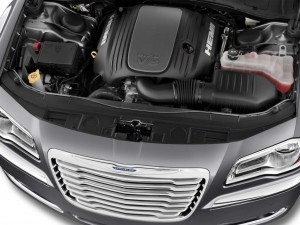
The 300 itself is due for a reboot soon – and it’s entirely possible the next-gen model (probably coming in time for the 2015 model year) will be a very different kind of car. It may not offer a V-8 option at all. The staying power of $4 gas – and the almost-here federal requirement that new cars average 35.5 MPG by 2016 – is having the same effect on big engines that a squadron of cop cars in front of the frat house has on a Saturday night kegger.
Cars like the 300 – especially cars like the Hemi-equipped 300 – may soon become a memory. Or at best, low-production, high-cost models that only the rich can afford.
Fair warning.
The 300 is an unusual animal – a large, RWD-based sedan available with V-8 power that doesn’t (necessarily) cost luxury car money. It can, of course – if you order one with the entire menu of options – including the high-fashion John Varvatos edition ($40,845 to start).
But it doesn’t have to.
The base model starts at $30,345 – slightly less than a new Toyota Avalon ($30,990 to start) and unlike the FWD and V-6 only Avalon, you can get a V-8 powered (and RWD) 300 S for $35,545 ($33,345 base price plus $2,200 for the Hemi).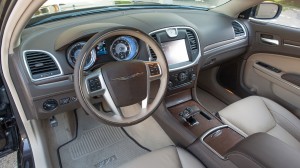
Even if you order the higher trim 300 C ($36,345) and add the Hemi, you’re still under $40k, sticker.
No other car on the market packages all this – full-size, RWD-based layout, available V-8 engine and under $40k – together.
That puts the 300 in a class by itself.
The major change for 2013 is the back-benching of the Hemi V-8, which is now optional even in the C (as well as top-of-the-line C Lux and John Varvatos trims).
All 2013s get the 3.6 V-6 as their standard powerplant, with the Hemi available as optional equipment in all but the base trim.
You can still order AWD in all trims.
An American car – the way they used to build ’em: Big, heavy, RWD-based (and available with a big V-8 under the hood).
Available with AWD (not offered in either the FWD Toyota Avalon or the RWD Hyundai Genesis).
Bigger – and roomier inside – than several luxury-brand sedans, several of which cost $20k-plus more to start.
A handsome, broad-shouldered lug of a car – John Wayne in a world of Tobey Maguires.
WHAT’S NOT SO GOOD
Hemi is now extra cost – adds $2,200 to MSRP.
Hemi is hungry: 16 MPG city with RWD; 15 with the optional AWD.
V-6 Hyundai Genesis is stronger – and quicker – and eats about the same amount of gas – as V-6 powered 300.
Standard equipment in all 2013 300s is Chrysler’s 3.6 liter “Pentastar” V-6. In the base trim 300, this engine makes 292 hp; in the next-up S trim – which is fitted with a less restrictive exhaust system – the output climbs to 300 hp. The engine is paired with a new eight-speed automatic and your choice (in all trims, including the base trim) of RWD or (optionally) AWD.
This combo delivers 0-60 in about 6.8 seconds (RWD) and 19 MPG city, 31 highway.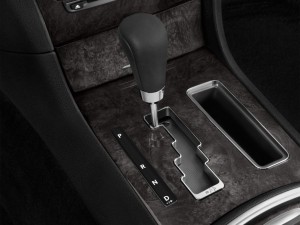
Relative to other large FWD sedans in its price range – such as the $30,990-$39,650 Toyota Avalon – the V-6 300 stacks up a bit under-par.
Though the Chrysler’s V-6 is stronger than the Avalon’s (3.5 liters, 268 hp) the Avalon is a bit quicker (6.5 seconds to 60) because it is so much lighter (3,525 lbs. vs. 4,029 lbs. for the 300). The Toyota’s gas mileage, in addition to this, is also slightly better than the V-6 300’s: 21 city, 31 highway.
However, the Avalon doesn’t offer AWD – and buyers who want a RWD-based drivetrain layout will naturally incline toward the Chrysler, even if it is heavier and slower. A lead sled has its charms, after all.
The main problem for the 300 – in terms of power/performance – is the Hyundai Genesis ($34,200 to start). It’s the only other large RWD-based sedan in this price range – and it comes standard with a 3.8 liter, 333 hp V-6 that gets the car to 60 in a class-quickest 6.4 seconds while also managing a still politically correct 18 city, 28 highway.
But – you can’t get AWD in the Genesis, either. And while you can get a V-8 (as optional equipment) the cost of that upgrade will take your breath away – relative to what your money will buy you at the Chrysler store.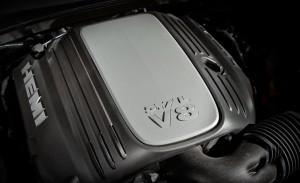
As mentioned above, you can add the Hemi to any 300 (except the base trim) for $2,200 – which means you can get 5.7 liters, 363 hp – and 0-60 in 5.3 seconds – for as little as $35,545 (the cost of the 300 S plus the cost of the optional Hemi) vs. $46,800 for the Genesis 5.0 R Spec.
That is a difference of more than $11,000.
And, get this: The V-8 Genesis is not any quicker than the Hemi-equipped 300. It gets to 60 in the same 5.3 seconds, a dead heat with the Chrysler’s run.
Curiously, the Genesis’ V-8 is stouter – on paper: 429 hp. The Hyundai is also a slightly smaller – and lighter – car. At 3,824 lbs., it weighs 205 lbs. less than the 300. So how come it’s not quicker? The explanation probably has to do with cubic inches – and torque. The Hemi – at 5.7 liters – is nearly 1 liter larger than the 5.0 V-8 in the Genesis R Spec. Being larger, it makes more torque – 391 ft.-lbs. vs. 376 ft.-lbs for the Genesis. And that higher peak torque output is reached sooner: 4,200 RPM vs. 5,000 RPM for the Hyundai. The higher – and sooner – torque output gives the 300 an advantage coming off the line – as well as stronger mid-range/part-throttle responsiveness.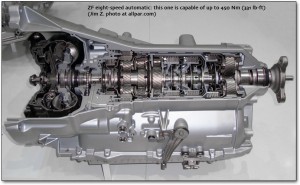
The only head-scratcher is why Chrysler doesn’t pair the Hemi with the eight-speed automatic that’s standard with the 3.6 liter V-6. Instead, you get a functionally unobjectionable but less fuel-efficient five-speed – which likely hurts the Hemi’s EPA numbers at least a little bit. The V-8 Genesis comes with an eight-speed – which may be why it manages 16 city, 25 highway – exactly the same as the RWD version of the Hemi-equipped 300 – despite its higher rated output.
Probably, the eight-speed used with the V-6 can’t stand up to the Hemi’s torque output. Hopefully, Chrysler has a new box in the works that can handle the Hemi.
If you’re older than 40, you can probably remember when cars like the 300 were as common as Camrys are today. When RWD (and V-8 power) was typical, not exceptional. The comforting feel of two tons of steel. The easy power of lots of cubic inches. The even more comforting indifference to the cost of fuel.
For all these reasons (except the cost of fuel today) the 300 is a pleasure to drive – especially if Hemi-equipped. It’s a dominating car; a heavyweight in a crowd of bantams. There’s a bit of mafia menace about it – a quality that old-school American rollers – think ’67 Cadillac Sedan deVille, or closer to home, ’70 Chrysler Imperial – also had.
They were manly cars – and not ashamed of it.
I’ve driven several over the years and each time I get one, I notice the way other drivers defer to it. Rarely is it necessary to flash to pass. The car ahead usually just slides over. When the roles are reversed – and you’re the guy up ahead, with the 300 closing fast in the rearview mirror – you’ll understand why.
And if the car up ahead doesn’t want to give way? Then it’s time to rouse the Hemi. Yes, the V-6 is absolutely adequate – more than adequate, actually. Who can take issue with 300 hp and mid-high sixxes to 60? This is as quick as muscle cars used to be – and ample power to shoehorn onto a busy freeway or maintain 75 on the highway without a hint of struggle.
But what makes the 300 special, what defines it more than anything else, is the eight cylinder gorilla under that coffin-nosed front clip.
Nearly twice the cubic inches a Camry is packing. Or for that matter, an E-Class Benz or BMW 5 (the former coming standard with a smallish V-6 and the latter coming standard with a downright tiny turbocharged four). These smaller engines may approximate the performance – in terms of 0-60 times – the Hemi delivers. But they can’t match the sensations – or sounds – that only a surplus of cubic inches delivers.
It is a rare treat.
The brooding looks of the 300 are either appealing to you – or not. Chrysler toned down the Goodfellas meme somewhat when the 300 was restyled in 2011 – but it is still a brassy car. Which, of course, is a big part of its charm – if you like brassy.
Also, if you like size for the dollar.
The 300 is a bigger car than a Mercedes E-Class ($51,000 to start) or a BMW 5 ($47,800 to start) – and not by a little bit, either. It is also almost the same size on the outside as a $71,990 to start Lexus LS – and nearly as roomy on the inside.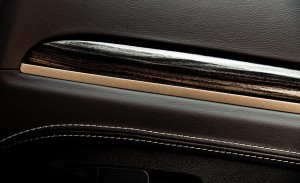
It is 198.6 inches long and rides on a 120.2 inch wheelbase. That is Large Marge, folks.
Stack those stats up against the Benz E: It is 191.7 inches long and rides on a puny (in comparison) 113.2 inch wheelbase. Ditto the BMW 5. It’s 193.1 inches long overall and rides on a 116.9 inch wheelbase. Even the almost twice-as-expensive Lexus LS – Lexus’ top-of-the-line model – is only slightly longer (200 inches) and rides on a much less generous 116.9 inch wheelbase.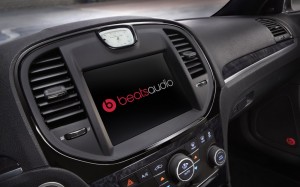
The Chrysler’s large-living layout gives it a very roomy inside, too: 41.8 inches of front seat legroom and 40.1 inches in the second row – as compared with 41.3 up front in the Benz E and a dismal 35.8 inches in back. Ditto the BMW 5, which has 41.4 inches up front but only 36.1 inches in the second row. Even the “big” Lexus comes up short: just 35.8 inches in the second row (though you do get 43.7 inches up front).
Point being: You get a lot of car – literally – for your coin when you buy a 300.
Now, it’s true the Toyota Avalon is similarly spacious (42.1 inches of legroom up front; 39.2 inches in back) but – again – it’s a front-driver and there’s no V-8 to make your day. The Genesis, too, is comparably spacious – actually more so up front (44.3 inches) but its V-8 is a toy for the rich-only.
On top of this physical goodness, the 300 is also a really nice car. It is not like the now-retired Ford Crown Vic – which offered the RWD/big car layout (and V-8 power) at an affordable price but in a rental car/taxi/cop car wrapper.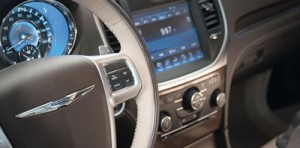
My test car – a loaded C Lux with the Hemi – was every bit the luxury car that a Benz E or BMW 5 is – except for the MSRP. Absolutely loaded – including the 10 speaker Beats by Dr. Dre premium audio system, wood and leather-trimmed steering wheel (heated, too); big-screen GPS/infotainment flat screen display, heated and cooled cupholders, rear privacy shade, LED cabin lights – to mention just a few of the items included on the extensive roster of creature features – and the sticker still came to just over $50k – about what you’d pay to get into a base-trim Benz E with a V-6 . . . or a BMW 5 with a four.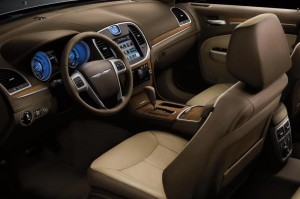
But, back up a bit and consider the base trim 300. It comes with dual zone climate control, heated front seats, leather trim, Bluetooth wireless/iPod hook-up and standard Sirius satellite radio with touchscreen display. It’s just barely over $30k – for a car that’s bigger and roomier – and as or more powerful – than either the $51k to start Benz E (302 hp) or the $47k to start (and 240 hp) BMW 5.
The only-slightly-more-costly S – when ordered with the Hemi – completely outclasses both of them in terms of power/performance (as well as the V-6 Avalon and Genesis). 
And the C (and C Lux and John Varvatos trims) add not just the kitchen sink – but the whole damn house – while still offering more engine (and car) for less money.
You can probably guess by now that I am a big fan of the 300.
THE REST
The current 300 is two years old; it looks like the ’14 is going to be a carryover – largely the same.
The big question is – what happens in 2015?
This is purely speculation on my part, but I suspect there will be a course correction that takes account of the economic (and political) realities of our times. The 300 – in particular, the Hemi-equipped 300 – was viable as a mass-production car pre-2008, when gas was under $2 and Average Joes could afford to buy a two-ton RWD sedan with a Hemi under the hood. But now? Consider the fact that even luxury-brands are scaling back on big engines. If people shopping cars in the $45k and up class can’t afford them – or just don’t want them anymore – how much longer will Chrysler be able to offer them?
And without the Hemi (even if it costs extra) the 300 will become something less than it has been up to now.
Here’s to hoping that doesn’t happen. That Chrysler figures out a way to keep the 300’s gonads in the sack – even if it means telling Uncle (and his 35.5 MPG fuel economy fatwa) to bugger off.
THE BOTTOM LINE
Like James Galdofini’s Tony Soprano, the 300 is tough – and hard not to love. I hope the car doesn’t go the way of the actor.
Throw it in the Woods?


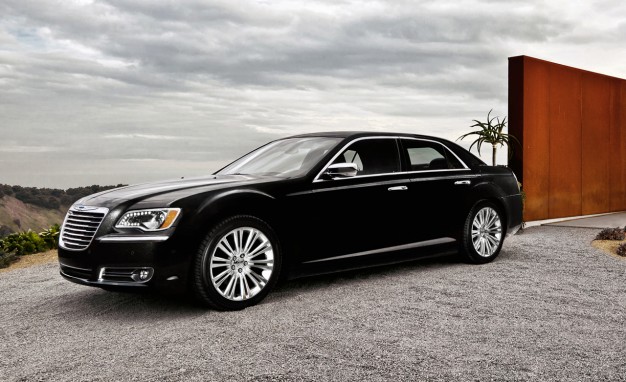

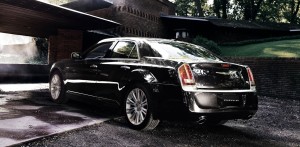

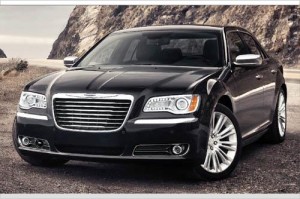



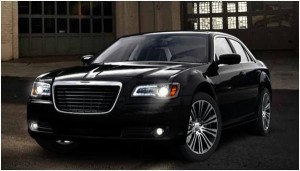







Way to meet MPG targets? Diesel 300 as standard equipment. V-8 optional.
That would be a damn fine thing!
The turbo-diesel would be better than the gas V-6, too. Superior torque in that big, heavy car is just what the Dr. ordered… and 40 on the highway would be the cherry on top.
eric, swamp, years ago, maybe 5 or so, GM said they were going to make a 4 ltr. diesel, a scaled down Duramax type engine, for 1/2 T pickups and other vehicles. The next year there was no word of it. I’m thinking I remember seeing a prototype of it(pic) in an SUV. I guess the $5 diesel KO’d it.
How’s the build quality? It seems every Chrysler product I’ve been in for the last 20 years (dad’s a Dodge man) has been squeeky, windy and (sooner than it should), rusty.
High prices aren’t always only about the name badge.
Eric G, that’s always been the rub with Chrysler’s as long as I can remember. Plenty power, even good fuel mileage with some but really noisy, windy, pieces falling off and parts breaking cars. I had several friends who worked for the same company for 30-40 years and they’d get stuck with a company car after having their own they collected mileage pay on. Every couple years they’d change their policy trying to maximize profits and then buy Chrysler products. You could hear the collective grown when these guys found out. Most of them used Honda’s forever but began using pricier and nicer cars as they got older. The last round was Toyota’s which everyone hated because of being noisy and uncomfortable. It takes a good car for someone who puts 500 miles pounding Texas highways every day to not go crazy. Good=quiet, comfortable, dependable and thrifty. Scratch thrifty if you must put up with noise, uncomfortable seats(a small Chevy I can’t remember the moniker)sub par a/c or anything else that detracts from comfort.
There are some real horror stories out there from when Cerberus Capital Management owned the company – we pick Dodge for minivans, but I wouldn’t buy a used one made during that era.
For a big American car, I prefer the Town Car/Grand Marquis instead.
Plenty of them out there loaded with all the options for purchase.
Just last month drove dad’s Town Car to take the kid to The Henry Ford (1500 miles there and back).
Comfortable as sitting in your La-Z-Boy.
Feeling tired?
Pull over and stretch out on the bench seat for a nap.
I love the Vic/Town Car, too!
In fact, I convinced my father-in-law (who does a lot of long-distance driving) to buy a loaded Town Car Cartier – and he loves it, too!
Isn’t Chrysler’s own Dodge Charger available with a V8 for even less money than the 300C? It should also offer similar creature comforts, plus a more, ahem, “road clearing” presence?
Hi Carzi,
“Isn’t Chrysler’s own Dodge Charger available with a V8 for even less money than the 300C? ”
Yes, it is.
They’re cousins, of course – but I ought to have at least mentioned the Charger as a way to get the same type of car, etc. for even less money. The R/T (with Hemi) is just under $30k, sticker.
Now, of course, it’s not as luxurious a car as the 300. But as you note, with the full menu of options included, it can be kitted out very nicely, too.
“But they can’t match the sensations – or sounds – that only a surplus of cubic inches delivers.”
This is my sentiment.
Such a nice car. I think it’ll be a classic one day. The last of the American RWD V8 Sedan?
I wonder how they cool cupholders?
What a pity that Chrysler has not chosen to hook the Hemi up to the 8 speed. Don’t think torque is the real issue, because aren’t they offering that combo in Ram trucks this year?
The Hemi/8 speed would have given the 300C spectacular acceleration, and improved mpg.
Can’t argue with your assessment that the current 300 C is an appealing car. But I would “never” buy one. I’m too embittered by what might have (and Should Have) been.